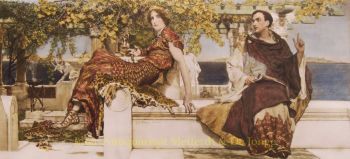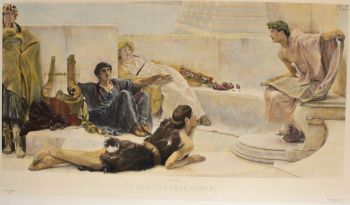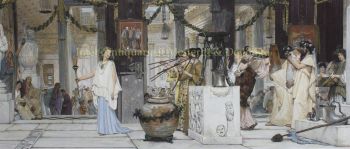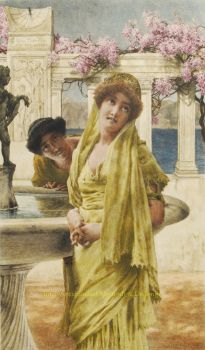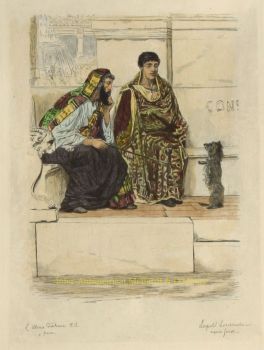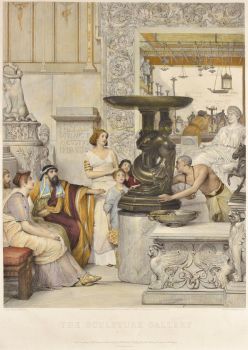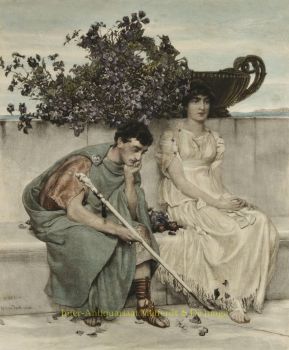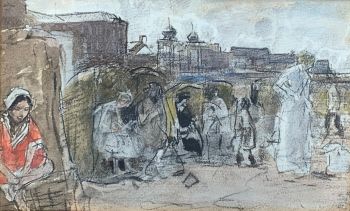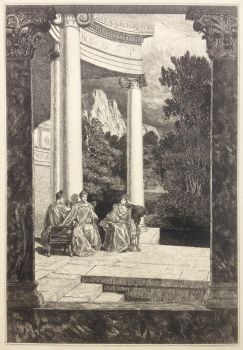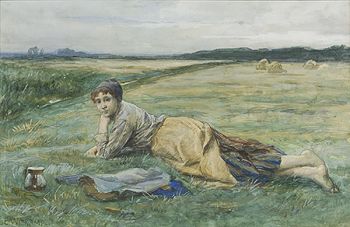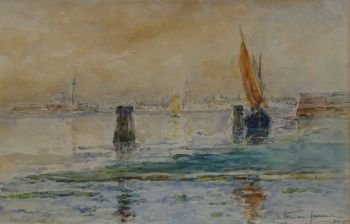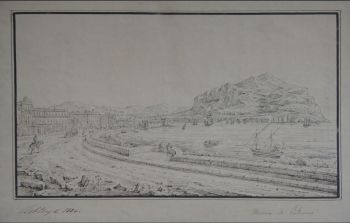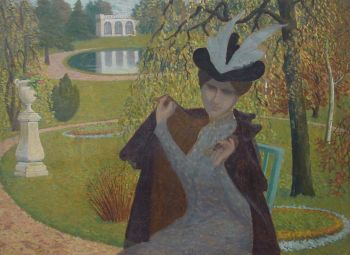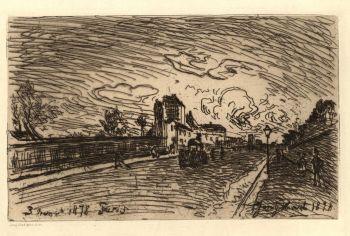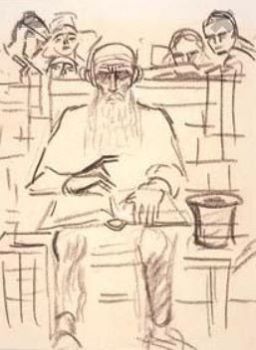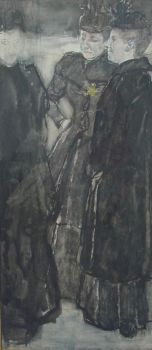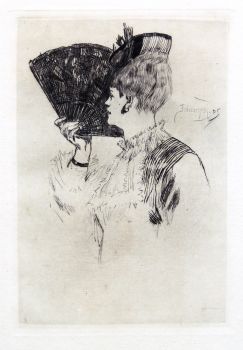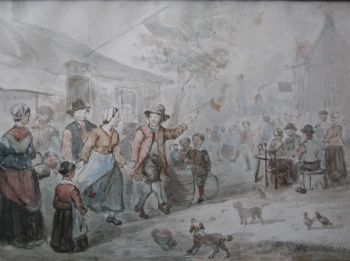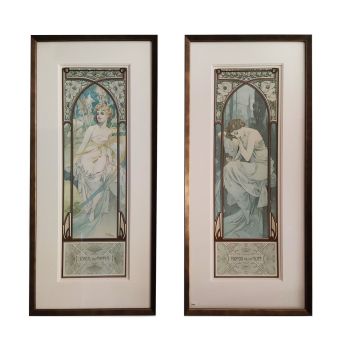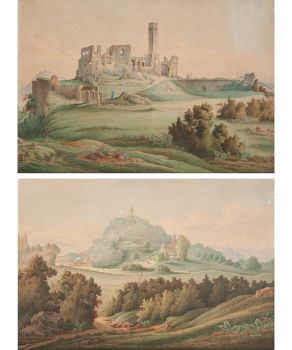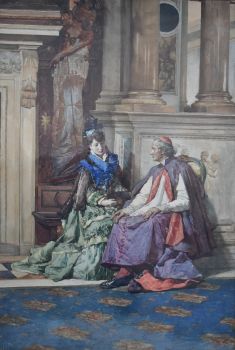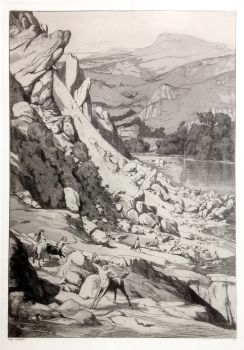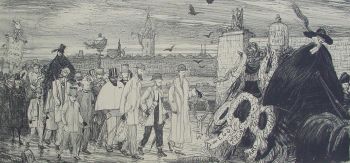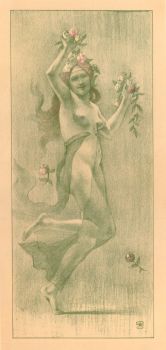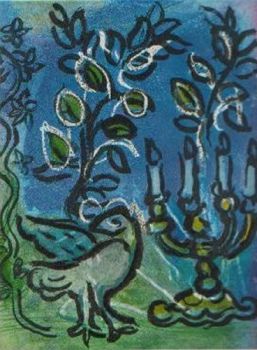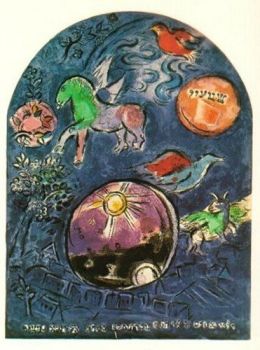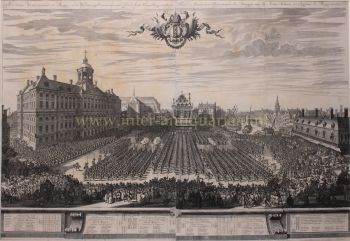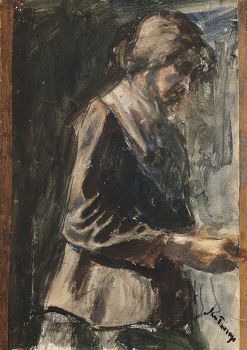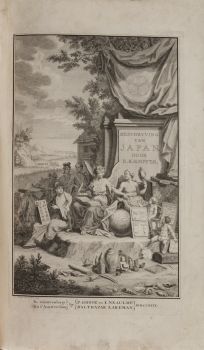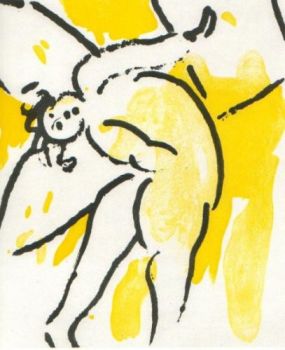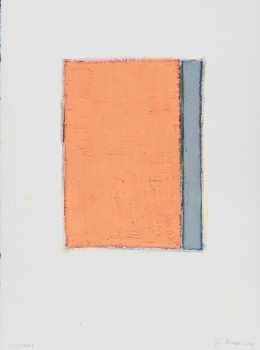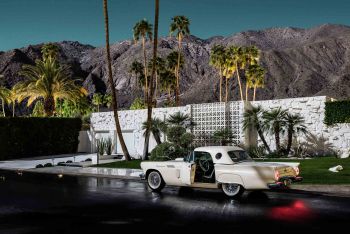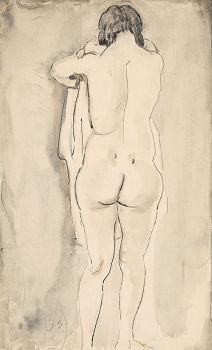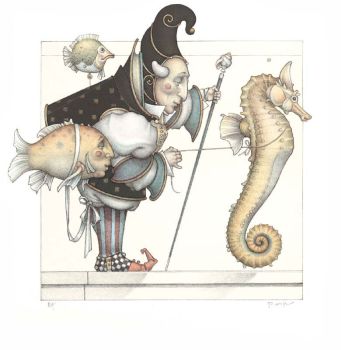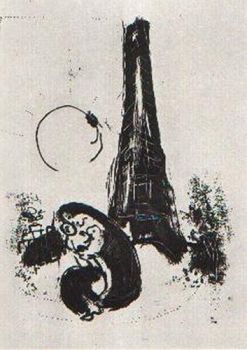Robert-Jan de Jonge of Inter-Antiquariaat Mefferdt & De Jonge about "Sir Lawrence Alma Tadema"
A few years ago in 2016, more than eighty paintings by Lourens Alma Tadema, an artist of Frisian descent and better known and renowned as Sir Lawrence Alma-Tadema, found their way to the Fries Museum in Leeuwarden, at the exhibition “Alma-Tadema - klassieke verleiding” (“Alma-Tadema - classic temptation”).
During this exhibition, Inter-Antiquariaat Mefferdt & De Jonge, an Amsterdam based antiquarian map and print dealer, organised a unique selling exhibition with 37 original prints, on view in Galerie Prins van Waldeck in Leeuwarden. Gallerease had a conversation with Robert-Jan de Jonge, owner of Inter-Antiquariaat Mefferdt & De Jonge.
 Robert-Jan de Jonge of Inter-Antiquariaat Mefferdt
Robert-Jan de Jonge of Inter-Antiquariaat Mefferdt
G: Already during his lifetime, Sir Lawrence Alma-Tadema (1836-1912), was a celebrated artist, also successful in business; his paintings were sold for prices between 2.000 en 6.000 pounds, enormous amounts of money in those days. In order to offer his work to a greater audience, Alma-Tadema (closely co-operating with art dealers and publishers) had reproductions made of his more popular and fashionable works: etchings, steel engravings and heliographic engravings (a photographic process developed in the 1820’s).
The reproduction rights of Alma-Tadema’s work were often sold for higher prices than the paintings: a painting with reproduction rights was often sold for more than the double of the price of a painting without such rights. From the 1920’s till the 1960’s, few people were interested in the oeuvre of Alma- Tadema; over the years, much of the graphic work has been lost. In your selling exhibition in Leeuwarden, you offer no less than 37 original engravings and etchings.
How rare are Alma-Tadema’s reproductions nowadays?
R-J: I try to buy all the graphic work of Alma-Tadema that emerges on the market. Every time again, I’m astonished and fascinated when I consider the amount of graphic work that has been issued and what is left of it right now. From the circa 800 prints that were issued per painting, only very few of them have remained.
It is not really clear how many paintings of Alma-Tadema have been reproduced in print. No doubt, his more celebrated works of art - which were of course more wanted and therefore more profitable - will have been subject to reproduction as an etching or engraving.
However, prints of paintings which were a huge success in those days, can sometimes be less wanted nowadays. Remarkable, it’s not really evident why one print is wanted more - and more easily sold - than another one.
Take, for instance, “The Parting Kiss”, where a mother kisses her daughter (on her way to the colloseum, perhaps) goodbye: this print - after a painting from 1882 - was already very expensive and popular when issued, but my specimen of this print hasn’t been sold yet.
"Parting Kiss", 1884
G: During many decades of the 20th century, the heydays of modernism, Victorian art was absolutely not “en vogue”. Some critics frowned upon Alma-Tadema’s work and considered it as “smooth drawing-room art”. Only during the 1960’s, people came to rediscover the oeuvre of Alma-Tadema and started to realise its importance in the (British) history of art. Since then, the prices for work by Alma-Tadema have increased astronomically.
For example: his painting “The Finding of Moses”, which was sold in 1904 for the huge amount of 5.000 pounds, received a bid at auction of no more than 250 pounds in 1960 (it was even “bought in”. That very same painting has been auctioned by Christie’s in 1995 for 1,75 million dollar and reached its price zenith - until now - in 2010, when it was sold at Sotheby’s for almost 36 million dollar. No doubt, the market value of Alma-Tadema’s reproductions has increased considerably in the past decades as well, but these prints are possibly still within reach of buyers with a more modest budget.
"The Finding of Mozes", 1904.
In which price category do these etchings and engravings come onto the market?
R-J: The graphic work of Alma-Tadema is indeed very wanted and sought-after, in particular in the United States of America. Therefore, the market value has evidently increased, also because his prints are scarcely found - as I already explained, only a very small part of the original amount of printed reproductions of Alma-Tadema’s work has remained. The prices of the works I'll be exhibiting vary, I’m offering one print for 575 euro, others for 950 euro. Most of the prints in this selling exhibition can be bought for prices between 1.200 and 3.000 euro, some extraordinary prints - for example “The Baths of Caracalla”, a beautiful reproduction of Alma-Tadema’s renowned painting of 1899 - cost 4.350 euro.
I often like to point out - it’s flabbergasting, almost absurd to realise - that by the end of the 19th century, one could have bought the entire oeuvre of Vincent van Gogh for the price of only one painting by Alma-Tadema. However, half a century later, one could buy the complete oeuvre of Alma-Tadema for the price of one painting by Van Gogh.
G: Alma-Tadema seems to be a rather romantic person, to whom the Netherlands - in general a quite “gutbürgerlich”, easy-going country where many 19th century painters focussed on rather mainstream and harmless topics such as landscapes, town views and seascapes - were, in a way, too “small”, too dull.
After his stay in Antwerp and Brussels, Alma-Tadema actually turned his back on the Netherlands; in England, where he would live permanently since 1870 and befriended many illustrious contemporaries like Oscar Wilde, Pjotr Tchaikovsky and John Singer Sargent, he was honoured and glorified.
The German emperor bestowed a “Pour le Mérite” (one of the highest orders of the German empire) on him, Queen Victoria even granted him a knighthood in 1899 and he is buried in St. Paul’s Cathedral.
Will the Dutch public nowadays be interested in Alma-Tadema’s glorification of classical antiquity, in the gracious and opulent decadence - and often sensuality - of these classic works of art?
R-J: It is hard to say whether people who would buy these prints are explicitly “classic” or “eclectic” in their taste. For some of them, a print will sooner be “art for the bedroom”, while others might just hang it up the wall, say above the couch in their living room.
Regarding the appreciation of Alma-Tadema: he is of course a highly revered and renowned artist and will be celebrated more and more in the Netherlands as well. It is significant that in the whole history, only three artists from the Netherlands - in the sense of the Low Lands - have had the tremendous honour of being knighted by English monarchs: Sir Peter Paul Rubens, Sir Anthony van Dyck (who, as Alma-Tadema, has been buried in St. Paul’s Cathedral) and Sir Lawrence Alma- Tadema. A very exclusive company, I dare say, Alma-Tadema had two very illustrious predecessors. This might emphasize as well as contribute to the righteous recognition and celebration of this great artist.
G: Alma-Tadema had a long career, starting in the early 1850’s and ending by his death in 1912. He experienced the rise of various artistic movements: post-impressionism, fauvism, cubism and even the beginning of futurism.
Many modern artists, such as Van Gogh, Matisse, Gauguin and Picasso weren’t really Alma-Tadema’s “cup of tea”. These artists however have been and still are (and will probably always be) worshipped, the genious of their work is undisputed. The taste of people - of collectors in particular - has become much more eclectic nowadays - it is perfectly possible to admire older, classical masters as well as modern and contemporary art.
"The Ever New Horizon", 1904
Do you think someone who would have a lithography by Picasso or Miró on his wall, could be tempted to hang an engraving by Alma-Tadema next to it?
R-J: Personally, I don’t see an Alma-Tadema and a Picasso hanging directly next to each other; however, I can imagine both works of art hanging in one and the same room. It says a lot about buyers and collectors of art - not only Dutch buyers, but buyers in general - that various sorts and styles of art are being combined in the same interior. Many interiors are diversified, creating an interesting mixture - a symbiosis, one could say - of styles, of objects of different ages, from antiques to Ikea. A print of Alma-Tadema is equally suitable to be combined with contemporary design furniture as well as with old-fashioned antique furniture.
It is interesting to note that art dealers who sold the paintings and reproductions of Alma-Tadema, as well as the publishers these dealers worked with, encouraged the buyers to create whole “Alma- Tadema rooms”, fully (and only) devoted to Sir Lawrence Alma-Tadema and with nothing but works by and from his hand. Something like that would practically be unimaginable in this day and age.
G: Finally - and out of sheer curiosity - a more personal question: what is your favourite work by Alma-Tadema and for what reason does it appeal to you? Has this work been reproduced as an etching or engraving?
Alma-Tadema’s “The Roses of Heliogabalus” (1888) and “A Coign of Vantage” (1895), depicting women looking down from a cliff in the bay of Naples, with the astonishingly beautiful colours of blue which are so typical for Alma-Tadema, could be considered my favourites. These works however are so famous and have been illustrated and reproduced so many times that I’ve seen and admired them sufficiently.
A very nice print in my opinion is “The Ever New Horizon”, after a painting from 1903, with three girls who look over a mediterranean see, hoping to catch a glimpse of their loved-ones, returning from sea, appearing at the horizon. Remarkably, this print of Alma-Tadema’s once very celebrated painting is less wanted nowadays, maybe because it’s a steel engraving: people often tend to prefer the more smooth heliographic engravings, with softer colours. Of the graphic works I will be offering at this exhibition, my favourite is without any doubt the engraving “The Baths of Caracalla” (1899), already mentioned before. It not only depicts a charming and apparently care- free “dolce far niente” (with a subtle sensuality) in the famous “thermae” - the bathhouse - of Roman emperor Caracalla, but is an excellent example of the masterly way Sir Lawrence Alma- Tadema managed too display various marbles as well.
See for more about Sir Lawrence Alma Tadema and his available works of, click here








